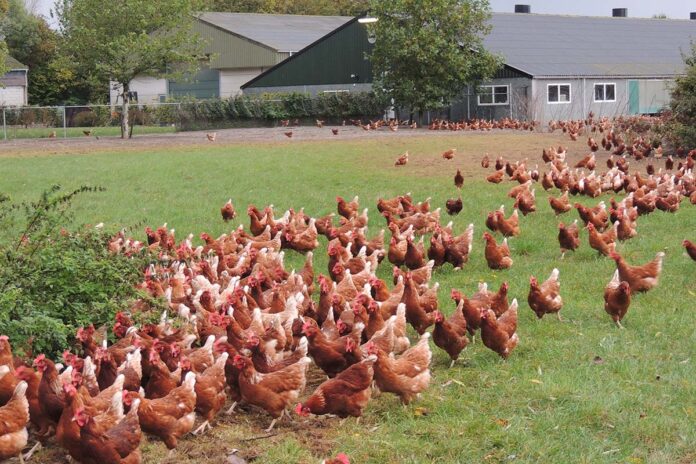
Free-range layer pullets are typically reared indoors within Australia, but adult layers go outdoors which might cause poorer adaptation due to the mismatch between rearing and laying environments.
Indoor enrichments may optimise physical development of pullets and subsequent welfare as adult free-range hens (Campbell et al., 2019). In the outdoor environment, hens may have greater opportunities for exercise and natural behaviours which might contribute to improved physical health and welfare (Rodriguez-Aurrekoetxea & Estevez, 2016). However, not all hens show equal use of the outdoor range. The objectives of this study were to assess whether adult hens varied in their external and internal health dependent both on their different rearing environments and subsequent variation in range use.
Hy-Line Brown® chicks (n=1386) were reared indoors for the duration of 16 weeks with 3 enrichment treatments including a control group having no extra materials over floor litter, feed, and water, a novelty group providing novel objects (e.g. balls, bottles, bricks, brooms, brushes, buckets, containers, pet toys, plastic pipes) that changed weekly, and a structural group with H-shaped metal perching structures.
At 16 weeks of age the pullets were moved to a free-range system and housed in 9 identical pens with three replicates of each rearing treatment. All hens were leg-banded with microchips and daily ranging was assessed from 25 to 64 weeks via radio-frequency identification technology. At 64-65 weeks of age, a total of 308 hens (statistical unit) across all rearing treatments and pen replicates were selected based on their range use patterns: no outdoor access, low daily outdoor access (1.4h or less daily), and high daily outdoor access (5.2 – 9 h daily).
The external health and welfare parameters were evaluated via assessment of plumage condition, toenail length, pecking wounds, and body weight, and internal parameters via post-mortem assessment of internal organ weight and keel bone damage including whole-body CT scanning for body composition.
General Linear Mixed Models showed the control hens had the lowest feather coverage (P<0.0001) and a higher number of comb wounds (P=0.03) than both the enriched groups. The high outdoor rangers had fewer comb wounds (P=0.04), shorter toenails (P<0.0001) and the highest feather coverage (P<0.0001), but lower body weight (P<0.0001) than the indoor hens.
The enrichment treatments did not affect the muscle, fat, and bone composition of hens (P>0.05), but high outdoor ranging decreased both body fat and muscle composition (both P<0.0001). The novelty group had lower spleen weights than the control hens (P=0.009) but neither group differed from the structural hens. The high outdoor hens showed the highest spleen (P=0.01) and empty gizzard weights (P=0.04). Both the rearing enrichments and ranging had no effect on overall keel bone damages (all P≥0.19).
Rearing treatments affected hen health and welfare at the later stage of the laying cycle but variation in ranging had a greater impact. Rearing enrichments thus might be recommended for positive effects on hen welfare but management of outdoor access is important in free-range systems.
References
Campbell DLM, de Haas EN & Lee C (2019) Poult. Sci. 98: 9-28.
Rodriguez-Aurrekoetxea A & Estevez I (2016) Poult. Sci. 95: 2503-2513.
From the Proceedings of the Australian Poultry Science Symposium 2020

















